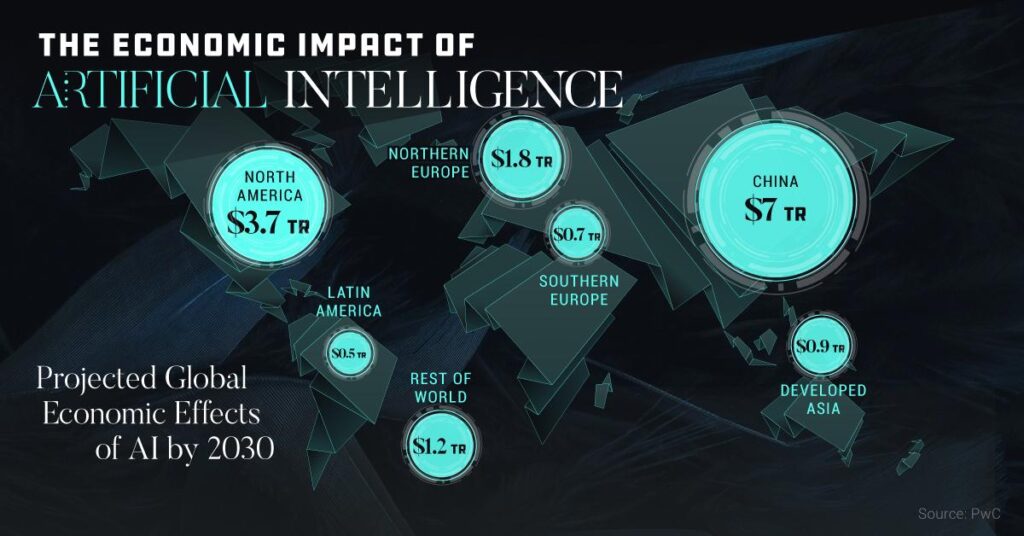As artificial intelligence continues to reshape industries and redefine economic landscapes, concerns are mounting over the sustainability of the burgeoning AI economy. From volatile investment patterns to ethical dilemmas and regulatory challenges, experts warn that without strategic intervention, the rapid growth fueling AI advancements could stall or even collapse. In this report, we delve into the critical question: Can we save the AI economy? Examining the current challenges, potential solutions, and the roles of stakeholders, this article sheds light on the future of one of the most transformative forces in today’s global market.
Challenges Threatening the Stability of the AI Economy
The burgeoning AI economy faces multifaceted obstacles that threaten its potential to become a sustainable cornerstone of the global market. Chief among these are data privacy concerns and regulatory ambiguity. As AI systems increasingly rely on massive datasets, the risk of misuse or unauthorized exploitation of personal information grows exponentially. Governments worldwide are struggling to keep pace with technological advancements, leading to inconsistent policies that create uncertainty for investors and innovators alike. This regulatory patchwork hampers cross-border collaborations and slows down the deployment of AI technologies in critical sectors such as healthcare and finance.
Moreover, the AI economy grapples with systemic challenges such as talent shortages and infrastructure inequalities. There is an acute scarcity of skilled professionals capable of developing and maintaining sophisticated AI models, which concentrates opportunity in a handful of tech hubs, leaving emerging markets at a disadvantage. Meanwhile, the energy demands of training large AI models are raising environmental red flags, pushing companies to rethink sustainable computing practices. Below is a snapshot of key issues impacting the AI economy’s stability:
| Challenge | Impact | Potential Solution |
|---|---|---|
| Data Privacy | Loss of public trust, legal risks | Robust encryption, ethical frameworks |
| Regulatory Gaps | Investment uncertainty | Global standards, adaptive policies |
| Talent Shortage | Innovation bottlenecks | Education programs, reskilling |
| Energy Consumption | Environmental impact | Green AI initiatives, efficiency |
Key Strategies to Revitalize AI Innovation and Growth
Regenerating momentum in AI demands a multifaceted approach that balances innovation with ethical accountability. Companies and governments must prioritize investments in research focused on transparent AI systems that foster trust among users. Encouraging open collaboration between academia, industry, and policy-makers is essential to break down silos and accelerate the translation of breakthroughs into real-world applications. Additionally, workforce reskilling programs aimed at equipping professionals with AI literacy can counteract the current talent shortage and stimulate more diverse innovation.
Concrete measures also involve embracing emerging paradigms such as federated learning and edge AI which place data privacy and efficiency front and center. A dedicated push towards sustainable AI practices, including the optimization of model energy consumption, is critical for long-term viability. The following table outlines key strategic pillars alongside their intended impact on the AI ecosystem:
| Strategic Pillar | Primary Benefit | Expected Outcome |
|---|---|---|
| Open Innovation Platforms | Cross-sector Collaboration | Faster Commercialization |
| Ethical AI Guidelines | User Trust | Regulatory Alignment |
| Workforce Reskilling | Talent Pipeline | Diverse Solutions |
| Energy-efficient Models | Environmental Impact | Sustainable Growth |
- Data governance frameworks that secure privacy without hampering innovation.
- Strategic public-private partnerships to co-fund high-risk, high-reward projects.
- Global standardized benchmarks to measure AI effectiveness and fairness.
Policy Recommendations for Sustainable AI Development
Governments and industry leaders must prioritize transparency and accountability in AI development. This involves enacting regulations that require open reporting on algorithmic decision processes and fostering a culture where ethical considerations are embedded at every stage of AI design. Key measures include:
- Mandatory impact assessments before deploying AI systems
- Incentives for companies adopting green AI technologies
- Establishing independent watchdog bodies to monitor AI practices
Moreover, investment in AI literacy and workforce retraining is critical to address socio-economic shifts caused by automation. Public-private partnerships can align innovation with social good, ensuring equitable access to AI benefits while minimizing displacement. Below is a strategic framework suggested for sustainable AI policies:
| Policy Area | Action | Expected Outcome |
|---|---|---|
| Regulation | Enforce algorithmic audits | Improved trust & fairness |
| Innovation Incentives | Tax credits for sustainable AI R&D | Reduced environmental impact |
| Education | Upskilling programs for AI displaced workers | Greater workforce resilience |
Final Thoughts
As the AI economy stands at a crossroads, stakeholders from policymakers to industry leaders must confront the mounting challenges head-on. While the potential for innovation and growth remains vast, addressing issues such as ethical deployment, workforce displacement, and regulatory oversight will be crucial to sustaining momentum. The path forward demands coordinated efforts and transparent dialogue to ensure that artificial intelligence continues to drive economic progress without compromising societal values. Whether we can ultimately save the AI economy depends on our collective resolve to navigate these complexities with foresight and responsibility.
